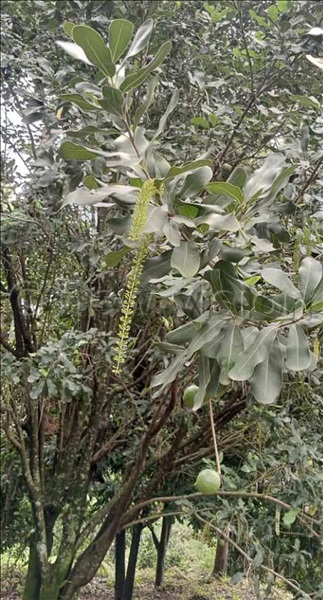By Stephen Nuwagira
Growing macadamia nut trees is one of the enterprises the government is promoting under the Parish Development Model (PDM).
Though the nut tree is not new in Uganda, few people across the country know about it and its agronomic practices.
Previously, it was largely promoted by agroforestry proponents, especially non-profit organisations, as an income earner and carbon sink since it’s a natural tree.
According to Ibanda District Farmers’ Federation (IBADIF) secretary general Simon Muhumuza, macadamia can grow in many parts of the country, including hills but not in wetlands.

The orchard crop needs rich well-drained fertile soils and 130cm of rain annually.
Before transplanting the seedlings, a farmer should prepare the garden well by removing all the unnecessary objects and stumps.
The size of the holes where you will plant the seedlings should be two by two feet, with spacing at eight by seven metres from one tree to another, or seven by seven metres, depending on the other crops and one’s agronomic practices.
“If you are intercropping it with crops like coffee, plant the seedlings at 10by10 metres because it tends to grow big, but not very tall. So, if you cross-space you will find challenges during pruning,” explains the agronomist.
An acre of land accommodates up to 244 macadamia trees. A seedling costs about sh15,000 presently.
Ensure that the garden is kept weed free, especially when the seedlings are still young. If possible, mulch the garden to keep out weeds and boost water retention in the soil.
Though it is not eaten by animals, you need to protect the seedlings from being trampled on by livestock and trespassers.
However, when the tree is established in about two years, the threats from animals are minimal.
According to Muhumuza, there are no major threats from pests and diseases that attack macadamia, but farmers must always be watchful in case of any such infestation.
It is not hard to harvest macadamia because when the nuts are mature, they fall to the ground and the farmer picks the nuts and can sell them right away.
For those that choose to store the nuts, you don’t need to sun dry too much, says an agronomist.
After drying, the nuts can be stored for between six months and two years, depending on what the nuts are for.
Remember the nuts are needed by breeders to make nursery beds, while others go to making snacks, and processing.
You can also sell the sines for grafting, for farmers with mature orchards, and earn an additional income.





